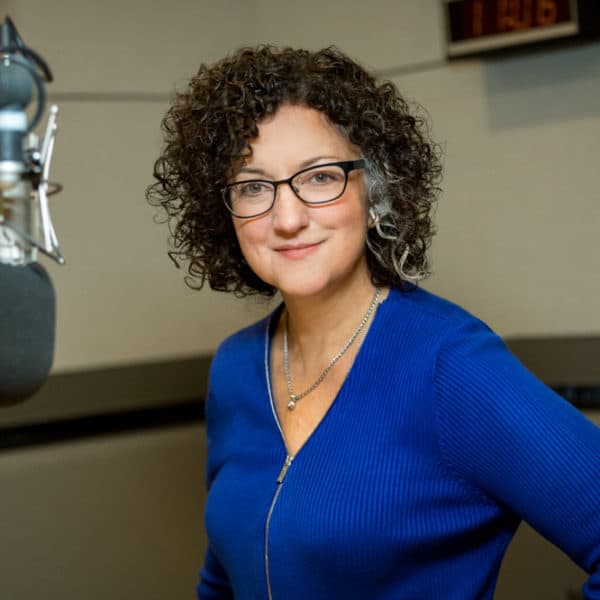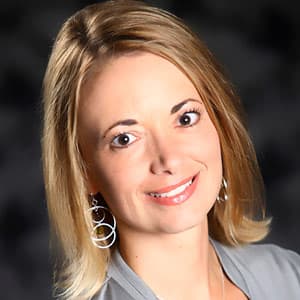Advertisement
65 Years After He Went Missing In Korea, Waltham Soldier's Remains Return Home
Resume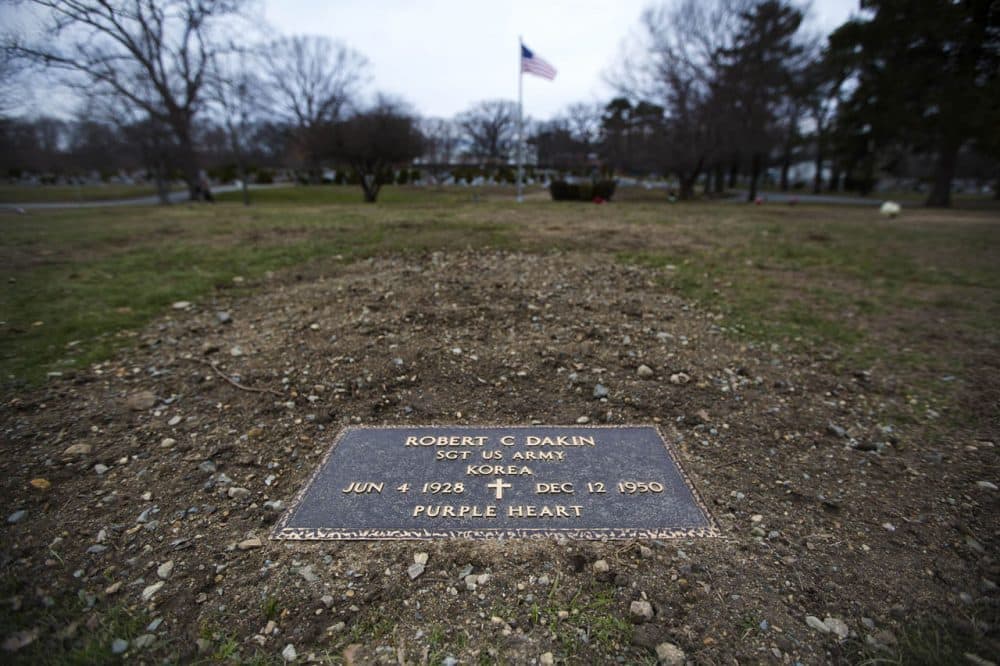
In the winter of 1950, Chinese forces stampeded across the frozen border with North Korea. American troops were surrounded and outnumbered.
It became known as the Battle of Chosin Reservoir. It left thousands of American soldiers and Marines dead or wounded.
Many Americans just went missing — for decades. Among them was 22-year-old Sgt. Robert Dakin, of Waltham.
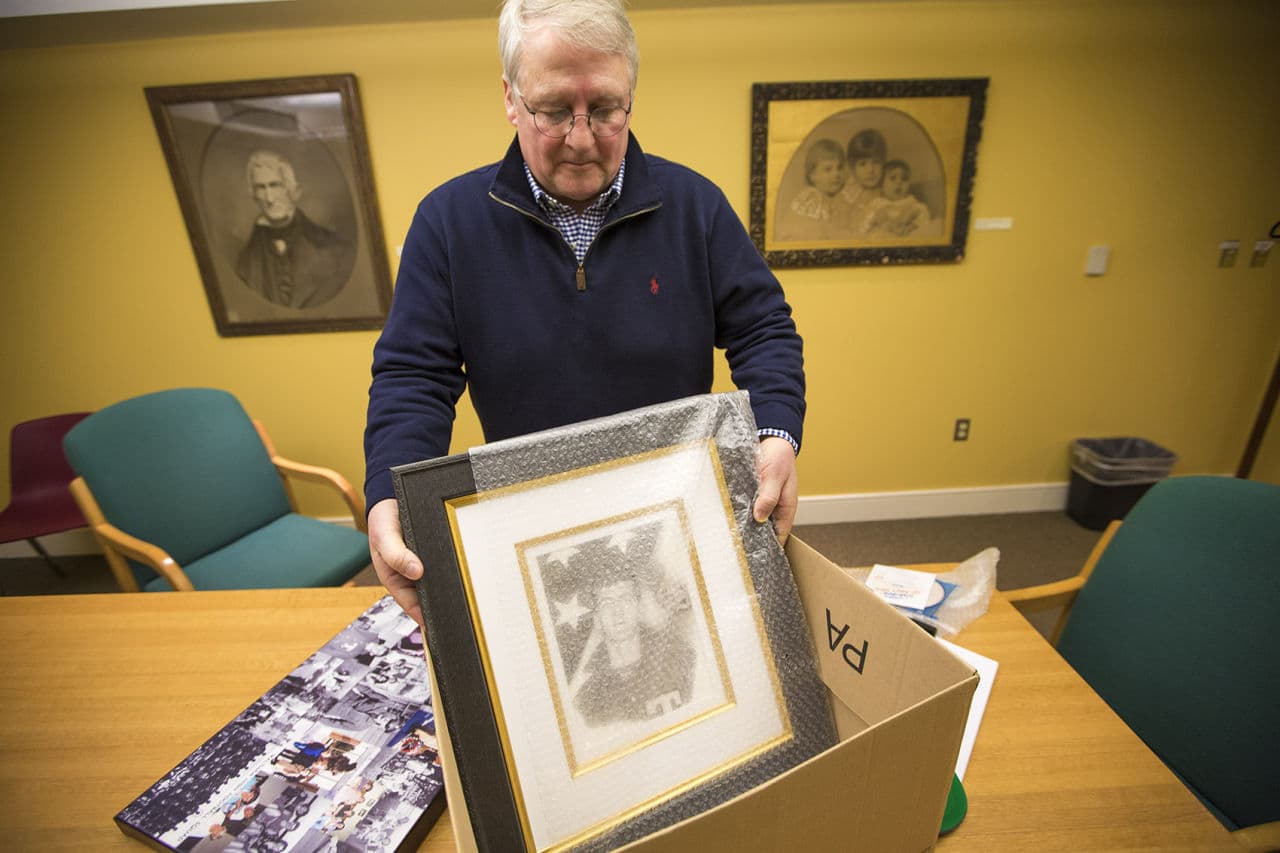
"Bob was the apple of my grandmother's eye. She was just so proud of what he could do," says Dakin's nephew, David Cline.
Cline never met his uncle. Cline was born two years after Dakin disappeared. But the man is a legend to him and to his siblings -- and their children. They all know the lore of Uncle Bob.
Dakin was born in 1928 in Waltham. He was the only boy, with four sisters. When Dakin was a teenager, he helped his father deliver huge blocks of ice off their family company's truck. He had the muscle for it. He was a star athlete in football, basketball and track. His mother Louise was always in the stands to watch him. And at home he watched over her, when his father became abusive.
Cline is proud to show off what snapshots he has of his uncle.

"This picture here I believe was taken in 1949. He's in his Army uniform, he's in front of his barracks," Cline says as he points to a photo montage he made.
Another photo shows Dakin towering about a foot taller than a fellow soldier. "That's why I'm kind of stunned," Cline says. "I thought he could have got out of any scrap he got into."
But he couldn't get out of the one at Chosin Reservoir.
"My grandmother always held out hope that he was a prisoner of war, but we kind of knew differently ... that he was probably passed," Cline says.
Dakin's mother kept a sketch of him hanging over her bed. She wrote letters to the Army and implored officials to find her son. All she heard back was that they’d tell her if they found anything.
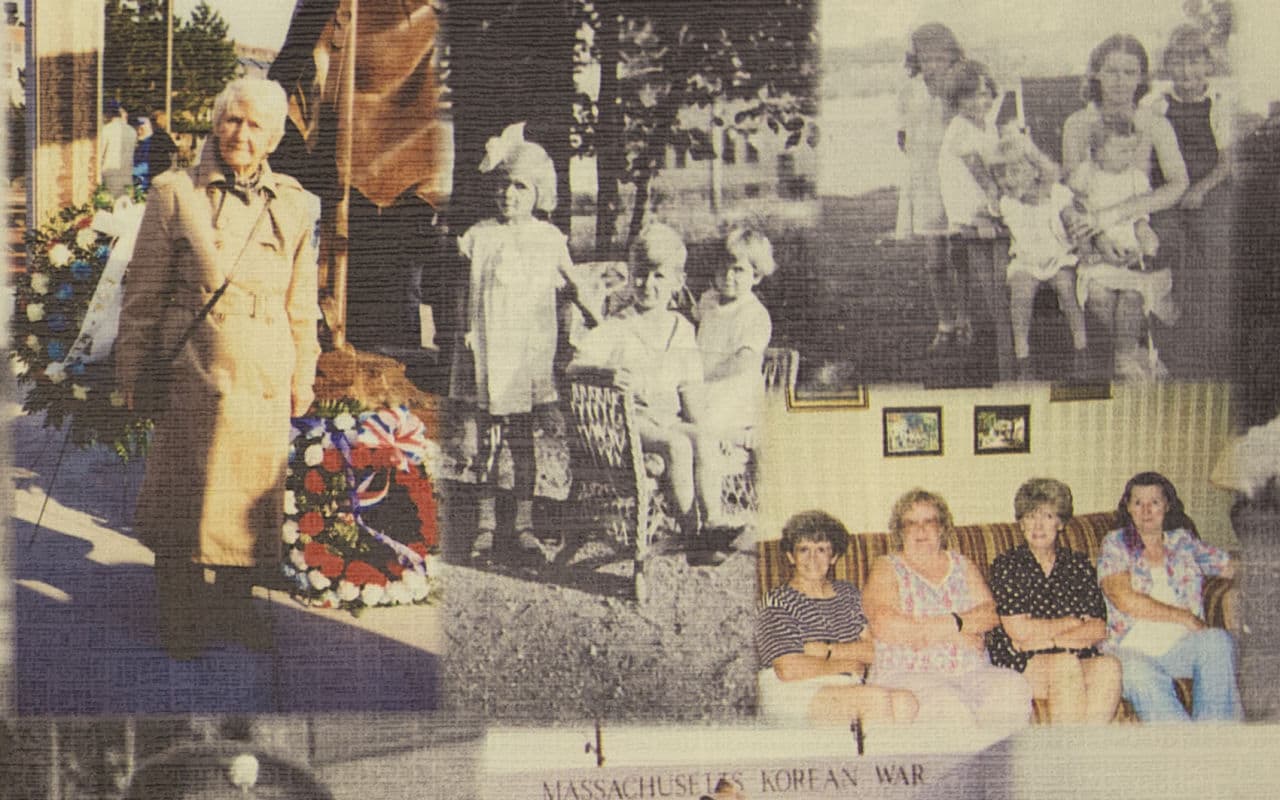
The family felt the void year after year. Thanksgivings were especially hard. Cline says there were other problems. Dakin's father was abusive at home. Family members moved away, lives came apart, relatives lost touch. The fact that Dakin was missing somewhere in Korea made things harder.
And it wasn't only family that felt the loss.
"I met Bob Dakin when we were in the ninth grade together at the North Junior High School here in Waltham," says Lorne MacArthur, who's 87.
"Bob missing in action really, really affected me greatly," he says. "I don't think a day ever went by that I didn't think of him — ever — missing in action, no body, a war so far away ... the forgotten war they called it."
MacArthur became superintendent of Waltham schools. Twenty-five years after his friend went missing, MacArthur created an award to be presented each year to the outstanding athlete who ran on the cross-country team. He called it the Bob Dakin Award.
"Bob's mother called me and she said, 'Lorne, after 25 years I thought everyone had forgotten, except for me. My heart's been broken over all these years.' And she was crying," MacArthur recalls.
A Painfully Slow Repatriation Process
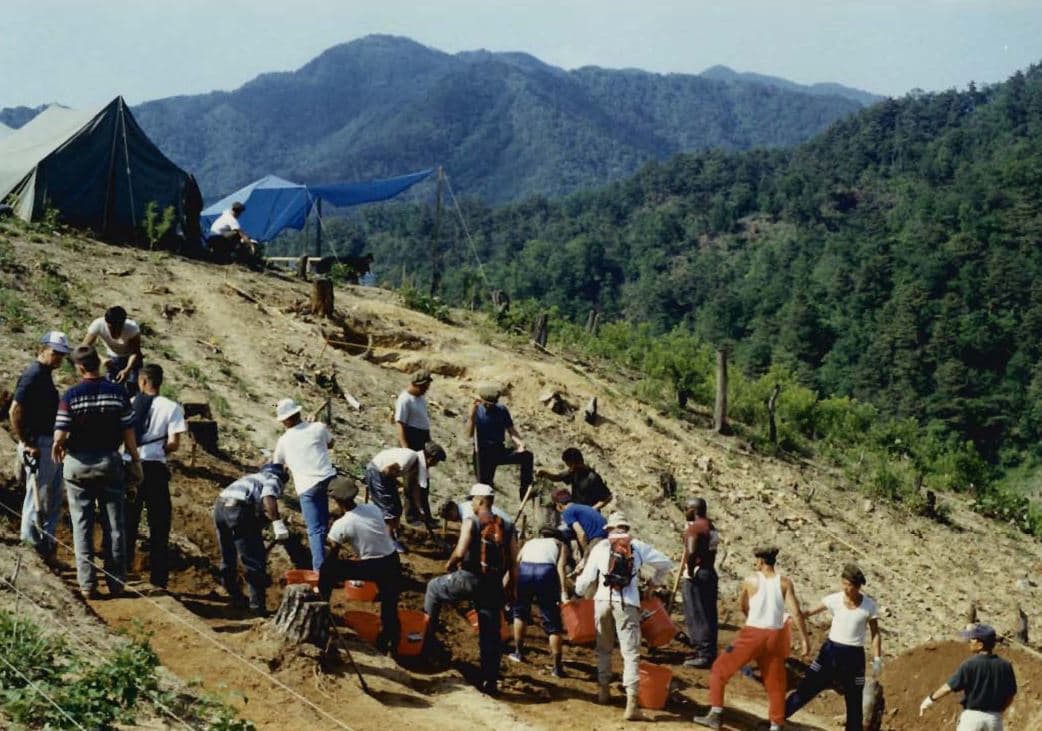
It wasn’t until nearly 20 years after that that North Korea turned over the remains of hundreds of American troops. There were 208 boxes. Each box contained the bones of several men.
The military laboratory at Pearl Harbor had the tough job of identifying the remains. It was a painfully slow process. The lab first got some of Dakin's bones back in 1993, and then more in 1999 and over the next two years. But it was only last November that Cline and his family got news that the remains of his uncle, Dakin, had been positively identified.
"I just wish the government had worked a little quicker," Cline reflects.
It was too late for Dakin’s mother; she died 14 years ago.
"I realize there was a daunting task for them to take all these GIs' remains and sort it out and do the DNA," Cline says. "But to give her hope, even to go to her and ask her for her DNA would have been just so much, because I know in her dying breath, she waited for Bob and wanted to know something — that he wasn't laying in a foreign soil, forgotten about."
Above video is courtesy of Waltham Community Access Corporation.
Last December, 65 years to the day after Sgt. Robert Dakin went missing in Korea, his hometown celebrated his return.
Hundreds of people lined the sidewalks and waved American flags.
Uniformed soldiers and veterans on Harleys formed a procession. Pallbearers lifted Dakin’s casket into a horse-drawn carriage that made its way to the church for a funeral Mass, and finally to the cemetery.
Dakin’s nieces and nephews and their children came in from across the country to honor him, too. Cline says it was the first time they had seen each other in years.
"We only had Bob's remains that really kind of brought the family back together," Cline explains. "It was the missing link. I think my grandmother would be so proud of her family knowing that we stepped up and we did what was right for Bob and the family. We gave Bob closure."
In a last gesture, the family buried the ashes of Bob's mother, Louise Dakin, with her son, who's finally home.
This segment aired on April 7, 2016.

